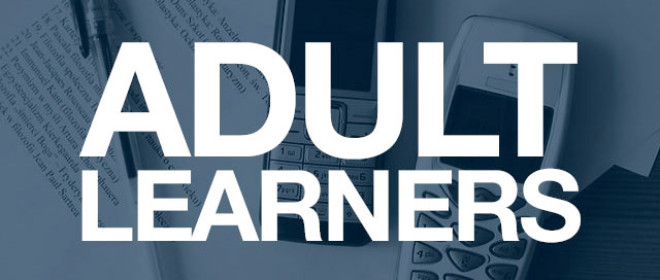
I am an adjunct professor. I teach adults. That is the easy part.
Picture this. It’s a Tuesday about 5:30 PM. The three-credit Master’s level course, “Leadership and Decision-Making” will begin at 6:00. Twenty-five students are registered for the course that will meet for five hours over seven Tuesdays plus one Saturday for 7 hours. The room is set up in pods of four. In fact, four female students are already in the classroom, sitting together but each catching up on email. Other students drift in, look around and choose a seat. One-by-one, each takes out their cell phones.
The majority of the students work full time and have probably been up since 6:00 AM, put in a full day’s work, drove to campus during rush-hour, hunted for a parking spot, probably skipped eating dinner, and may have entertained thoughts like, “I am so tired – why am I doing this?”
My responsibility as an adjunct instructor is to teach the course content and assess student achievement. My challenge is help them actually learn. The first thing on my mind is to prime learning by getting the students ENGAGED. In fact, how this is accomplished the first class sets the stage for the rest of the course.
TeamUP at Cengage Learning noted, “Those looking for easy answers as to how to engage adult learners will have to give up their search. There are no easy answers.” A couple of their suggestions are;
- Don’t waste an adult learner’s time – be focused and be relevant.
- From the very first day, find ways to reel in adult learners. Aim to have them leave your class or seminar thinking, “Wow! This is great. I’ve never had a class like this before.”
One thing I’ve learned not to do is to ask predictable introductory questions, such as, “Why did you register for this course?” (It’s required).”What would you like to get out of this course?” (An “A”). “What motivated you to get a Master’s degree?” (My job requires a Masters in order to be promoted. By the way, they are paying the tuition). “What would help you know this course will be worth your time and effort?” (You’ll let us out early). Hmmmmmm…
I assume three things when planning activities to engage adult learners:
- Adult learners tend to resist traditional “ice breakers,” activities often used to engage learners
- Not all of the learners will be engaged – my goal is 80%
- The engaging activity has to be relevant
I design the activities around the topic of the class and the Student Learning Objectives. To make the activities relevant, I put myself in their place as much as I can. Then I imagine scenarios the students might be dealing with and from this line of thinking, and from activities I used before, ideas emerge. I know the activity will work the best if it is novel, interesting, invites the input of most of the students, and includes competition.
The course needed to cover major theories of leadership that have surfaced over time. Another objective was that the students would be able to identify characteristics of effective leadership. The engaging activity I used was, “Who has the best boss?”
At each table, the group had to decide who had the best boss and defend their decision with specific rationale. Then, each group’s best boss was put up against the others and the entire class voted to choose the best of the best. (I would try to contact this person and invite them to attend a later class to be interviewed by the class).
The activity took about twenty minutes. The students easily identified several characteristics of effective leaders and had fun doing it. They were engaged – at least to begin with.
Websites/Blogs
- eLearning Industry http://elearningindustry.com/11-tips-engage-inspire-adult-learners
11 Tips to Engage and Inspire Adult Learners
- The eLearning Coach – For Designing Smarter Learning Experiences http://theelearningcoach.com/elearning_design/isd/30-ways-to-motivate-adult-learners/
Get Your Audience Pumped: 30 Ways to Motivate Adult Learners by Connie Malamed
- Training on Demand https://www.jjkellertraining.com/TrainingResources/1809/OSHA
Engaging the Adult Learner
- Cengage Learning http://blog.cengage.com/top_blog/five-ways-to-engage-adult-learners/
A Simple, Easy To Understand Guide To Andragogy
- Andragogy means the understanding of the science and practice of adult learning. This contrasts to pedagogy, which is the understanding of the science and practice of children learning. In this post, you’ll discover a layman’s guide to andragogy – what it is, where it came from and its fundamental tenets.
Academic Articles:
Burrell, D. N., Finch, A., Fisher, J., Rahim E., and Dawson, M. (2011). The use of engaging and experiential learning innovative teaching practices for graduate. Students Review of Higher Education and Self-Learning, 4(11), 45-53.
Caruth, G. (2014) Learning how to learn: A six point model for increasing student engagement. Participatory Educational Research, 1(2), 1-12. doi.org/10.17275/per.14.06.1.2
Yoo, S. J, and Huang W. D. (2013). Engaging online adult learners in higher education: motivational factors impacted by gender, age, and prior experiences. The Journal of Continuing Higher Education, 61, 151–164. DOI: 10.1080/07377363.2013.836823.





Bob Lucas
Great information Becky. I also encourage adult educators and trainers to provide stimulus for all three learning modalities (visual, auditory and kinesthetic) at different points throughout their session. I also stress the value of them doing their own research on the neuroscience of learning (brain based learning), so that they better understand what helps learners better gain, retain, recall and use what they experience.